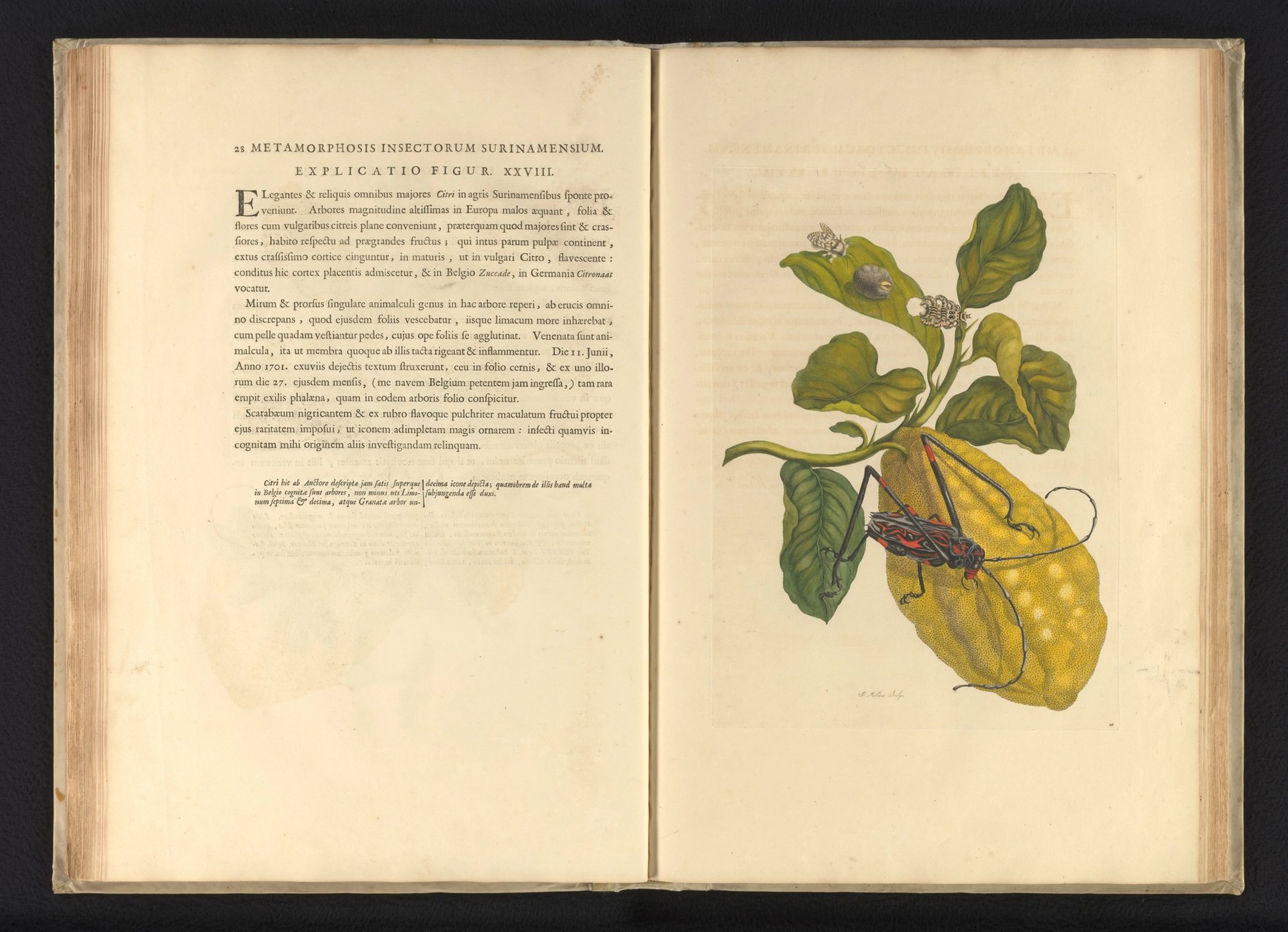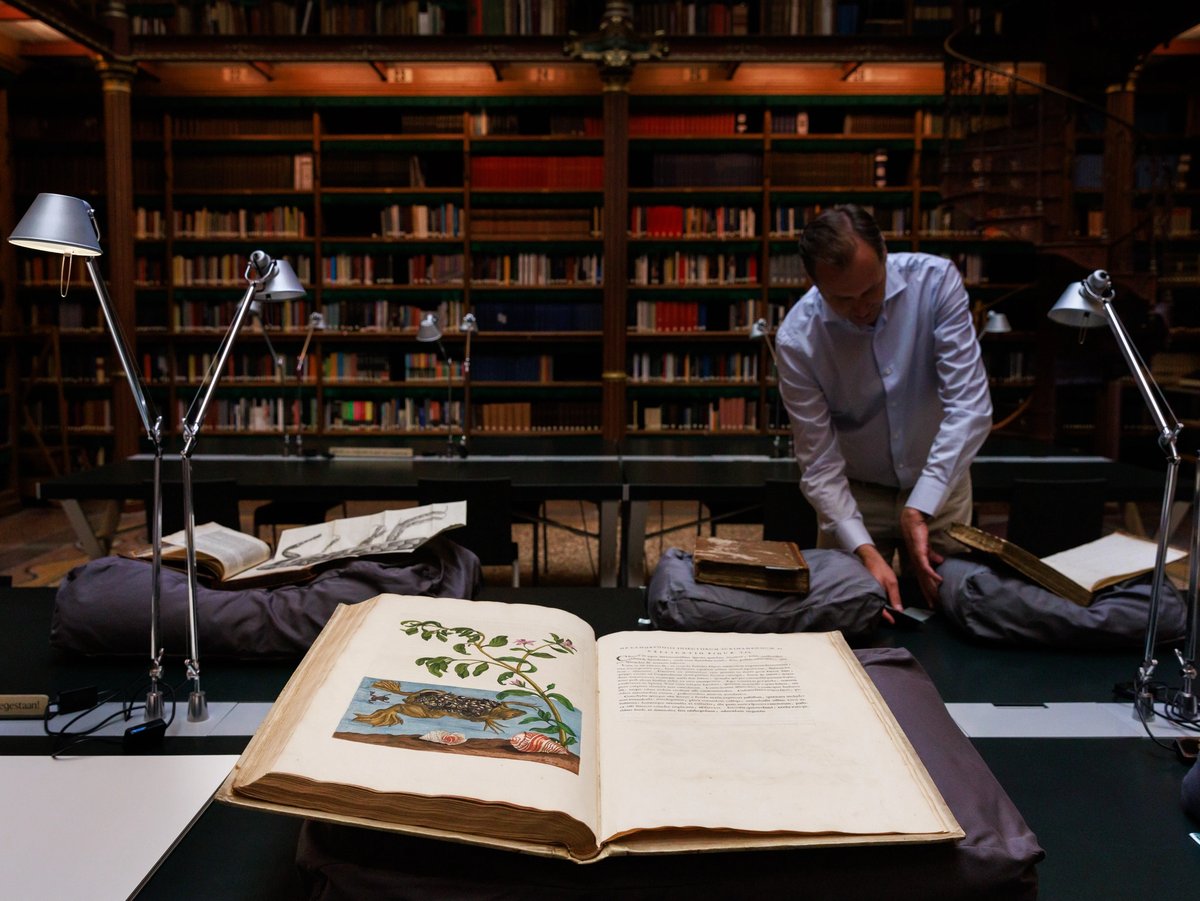The Rijksmuseum in Amsterdam has acquired a rare first edition of an early illustrated natural history book on Suriname that sparked trenchant criticism of its female author.
Maria Sibylla Merian’s 1705 Metamorphosis Insectorum Surinamensium is considered a “high point” of early printing, portraying exotic insects at a time when Western Europeans were keen to explore, name and understand the world.
The German-born botanist and artist, inspired by butterfly collections in Amsterdam, travelled to Suriname with her daughter in 1699. Her influential book of 60 hand-coloured plates and descriptions was first to record the transformation of caterpillar to butterfly in its natural habitat—but was later criticised for biological mistakes and “exploiting” the knowledge of indigenous and enslaved people.

A page from Maria Sibylla Merian’s Metamorphosis Insectorum Surinamensium © Rijksmuseum
Alex Alsemgeest, the curator of the library collections at the Rijksmuseum, suggested the controversy made the book all the more interesting to research further.
“I don't know of other examples where a female naturalist made a trip like this and produced such a beautiful book in the late 17th or early 18th century,” he hays. “In the 18th century, most of the criticism was directed towards her scientific approach... To be fair, it’s probably not so much her scientific approach as the fact that she was a woman.”
More recently, the contemporary artist Patricia Kaersenhout superimposed images of prominent Carribbean-born people onto images from the book, and made a seriesresponding to the “erasure” of local people’s names from the botanist’s work.
“The main criticism has been that Maria Sibylla Merian didn't mention the names of the people that she took information from,” Alsemgeest says. “In the book, she clearly describes that specimens were handed over or that the local population
or enslaved people pointed out things to her, but she doesn't mention [them by] name. [Kaersenhout] uses the plates of Maria Sibylla Merian and combines them with the faces of people from [the area] to connect the findings of Merian with the people of Suriname. That’s a wonderful approach.”
A similar book, The Natural History of Brazil by Willem Piso and Georg Marcgrave, published in 1648, took an even more dismissive attitude toward Indigenous people, Alsemgeest points out: “In that book, you find many local and even African languages in the naming of the plants and the animals. They don’t even mention help from local people. It is published and written as if it came from their own great minds. Maria Sibylla Merian mentions that she receives help all the time, but doesn’t give names. Some people say: ‘Well, she doesn’t even give the name of her own daughter in the book!’”
Several hundred copies of the book were published, and the Rijksmuseum aims to reunite extant copies for research and display. In the meantime, some of its illustrations are currently on display in a separate exhibition at the Allard Pierson Museum in Amsterdam.





